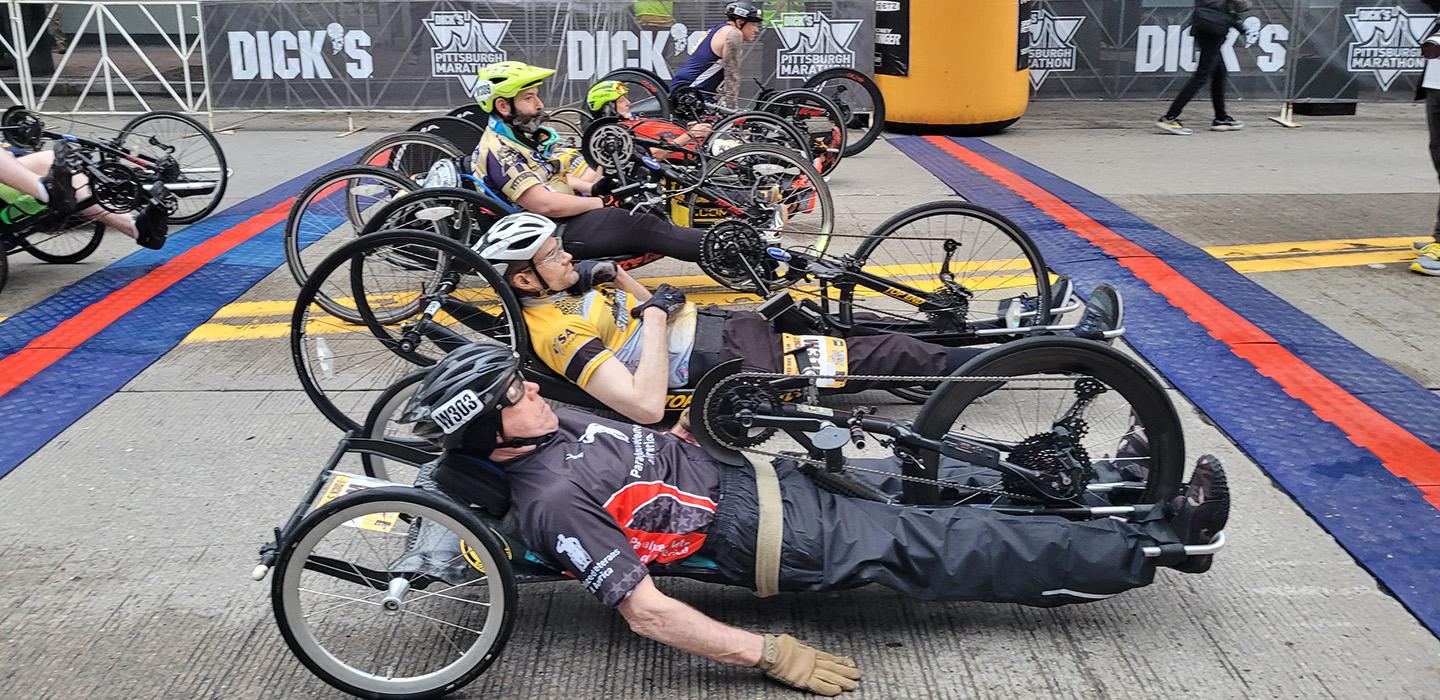
Subscribe to Pittwire Today
Get the most interesting and important stories from the University of Pittsburgh.On May 4, a dozen hand cyclists crossed the finish line of the 2025 DICK'S Sporting Goods Pittsburgh Marathon — a testament to the mental and physical stamina necessary to traverse 26.2 miles over the city’s bridges, through neighborhoods and up a few monster hills.
Hand cycles are bicycles adapted for riders with spinal cord injuries and other disabilities. They contain many of the same components as a bicycle, but a hand cycle is propelled using upper-body strength. A rider, seated or reclined, pushes on pedals attached to a drivetrain similar to a bike’s. While a hand cycle’s three wheels make it more stable than a bicycle, it still takes extensive practice to learn how to steer the vehicle. They can flip and even eject riders.
That’s where Pitt’s Hand Cycle Assistance Team (H-CAT) comes in, providing logistical and on-the-ground support for the athletes, from fixing popped hand cycle chains to staffing medical tents.
“We’re the pit crew for the racers. The marathon organizers have sufficient volunteers to give out water, but they want somebody who can be responsive and responsible for the hand cycle division, before, during, and after race day,” said Dan Fisher, assistant chair for administration and operations in Pitt’s School of Health and Rehabilitation Sciences.
He now co-directs H-CAT, which he formed in 2011 with Rory Cooper, an accomplished hand cyclist and founding director and VA senior research career scientist in Human Engineering Research Laboratories. Their goal: Create an infrastructure of support that allows hand cyclists to feel welcome participants in the Pittsburgh Marathon.
Fisher is a retired U.S. Army Colonel, and it shows in his meticulous attention to detail. He organizes the volunteer team — 26 people from Pitt and community organizations — using a “hope for the best but plan for the worst” approach, anticipating every potential need or pitfall that could impact a racer.
Safety is the number one concern of the H-CAT team. A hand cycle positions a rider about 5 inches above the ground, resulting in low visibility of potholes and turns. H-CAT works closely with the Freddie Fu Cycling Team to offer each rider an escort to provide feedback and warnings about imminent dangers. They also help racers keep pace and offer encouraging words when the going gets tough.
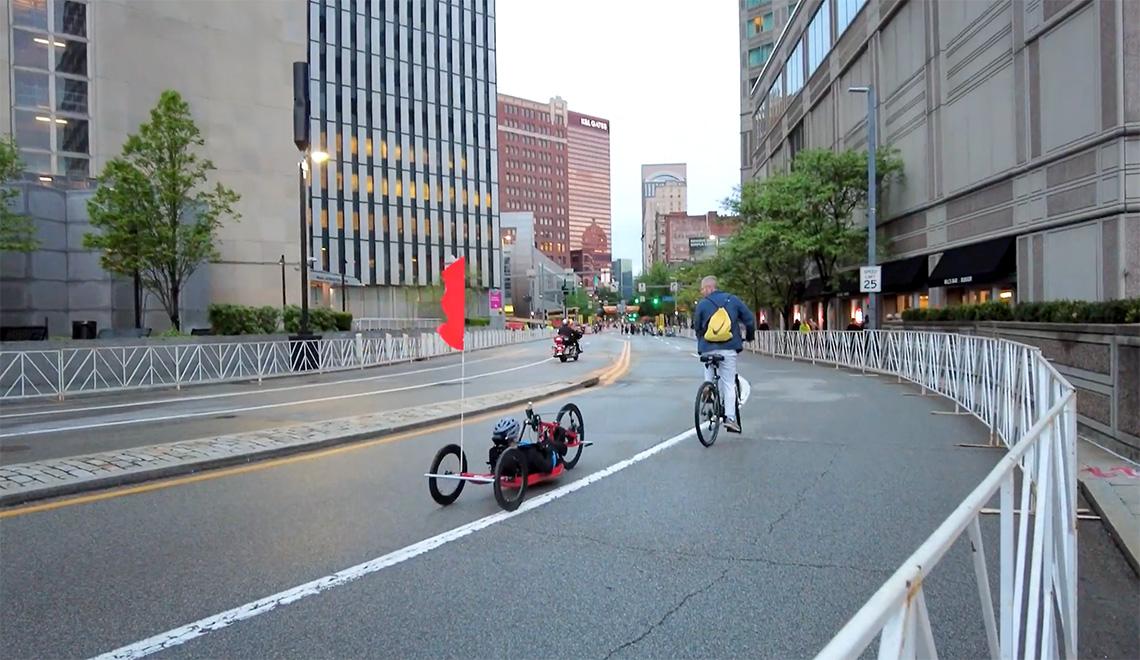
“Hands down, when it comes to support, H-CAT makes the Pittsburgh marathon the best marathon,” said Lee Marshall, winner of Sunday’s hand cycle division and board president of the Steelwheelers, a nonprofit providing opportunities for disabled people to participate in competitive sports.
“There’s no other marathon I’ve done where you have your own assigned cyclist. In Chicago and Boston, they only have a few bicyclists in front,” he added. “Knowing I’m going to be well supported in the Pittsburgh marathon is the reason I keep doing it.”
There are special medical-related considerations to keeping hand cyclists safe, said Gary Galang, H-CAT’s director of medical support and assistant professor in the School of Medicine. He oversees volunteers, including Pitt medical students, who have training in treating disabled people. Medical volunteers are stationed along the race route as well as at the start and finish lines.
“We’re ready for any contingency — anything from scrapes to broken bones,” Galang said. “Injuries may present differently in disabled athletes who don’t have sensation in parts of their body; they could have a broken bone and not feel it.”
He added that disabled people may have slower heart rates and lower temperatures, which increase their vulnerability to exposure.
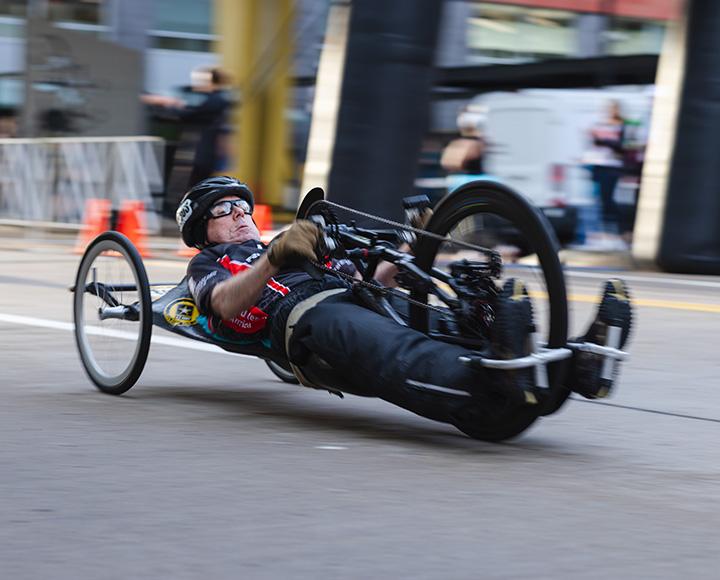
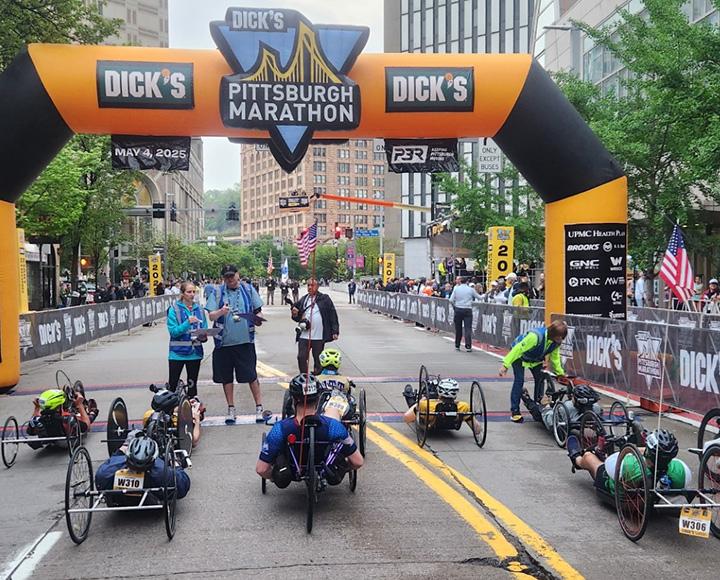
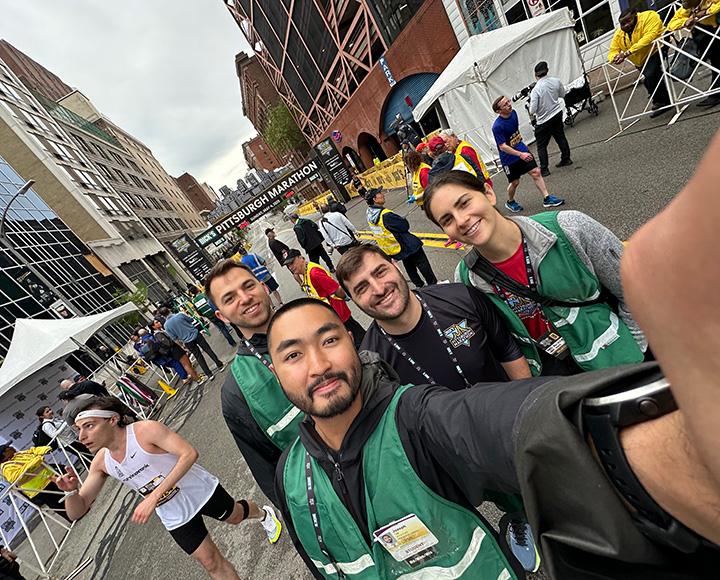
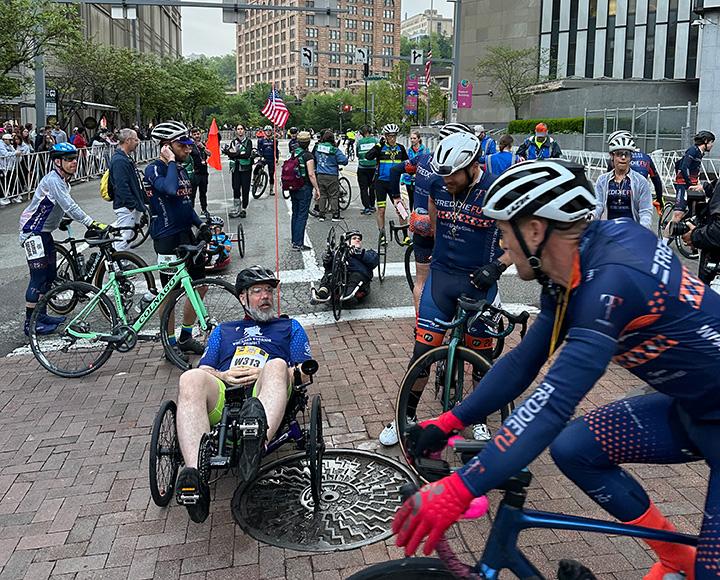
Enduring effects
According to H-CAT co-founder Cooper, hand cycling has many benefits, including increased cardiovascular and mental fitness. Marathons are places where disabled athletes are engaged with their community, and their presence increases awareness that people in wheelchairs are also athletes, he said.
“We have lot more in common than what separates us,” he said.
Getting involved in hand cycling was a lifeline for Shawn Seguin, who was injured overseas while serving in the U.S. Marine Corps. This year’s Pittsburgh Marathon coincided with the 13th anniversary of his surviving a suicide attempt.
Taking up hand cycling motivated him to take better care of himself, he said.
“Learning to cycle was how I got started taking care of myself, and I haven't stopped riding since. I’ve now gained a career, a wife and two kids, and I’m thriving.”
Top photo by Nichole Faina


